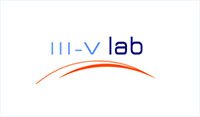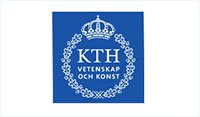III-V Lab
1 Avenue Augustin Fresnel
91767 Palaiseau
France
III-V Lab is a private R&D organisation jointly established by Nokia, Thales and the CEA under the French “Economic Interest Group” (GIE) status. III-V Lab conducts R&D activities in the field of micro/nano-electronics and photonics, and develops cutting-edge III-V semiconductor components for different applications: telecoms, space, defence, security, safety. and its staff is composed of around 100 permanent researchers, plus around 25 PhD students. III-V Lab masters the different steps needed to manufacture III-V components from design to characterization, including growth and processing.
The core mission of the III-V Lab is to bridge the technological “valley of death”, pushing TRL 2 concepts to TRL6 pre-series and pilot lines. From there, production and commercialization of small series can be carried out at the II-V Lab in order for the technology to gain momentum or the market to mature. But the final goal is industrial transfer, either to the business units of its members, to spin-out SMEs or to outside established companies.
Role in cflow
III-VLab is the coordinator of the project, as well as the main partner for the fabrication of the devices. III-VLab will work in collaboration with other partners to design the different building blocks and define their integration strategy into the final Photonic Integrated Circuits demonstrators. The 4,000 m2 of clean room facilities located in Palaiseau (suburb of Paris) will be used for the epitaxy and processing of the PICs.
Unit of Photonics
Department of Applied Physics, School of Engineering Sciences
Royal Institute of Technology-KTH
Electrum 229
164 40 Kista
Sweden
Since its founding in 1827, KTH Royal Institute of Technology in Stockholm has grown to become one of Europe’s leading technical and engineering universities, as well as a key centre of intellectual talent and innovation. We are Sweden’s largest technical research and learning institution and home to students, researchers and faculty from around the world dedicated to advancing knowledge.
Role in cflow
In this project KTH will collaborate with partners in consortium to develop buried QCL, QCDs and waveguides integrated with both with semi-insulating InP:Fe regrowth using HVPE reactor, analyze and characterize high speed QCL and modulators, and performing system experiments with free space communication utilizing advanced modulation formats.
mirSense
Centre d’intégration NanoINNOV
Bâtiment 863
8 avenue de la Vauve
F-91120 Palaiseau
France
mirSense is a French SME composed of 12 permanent and three PhD students. mirSense is a startup which develops and produces QCL diodes and advanced photonic devices such as wideband tunable sources for real-time, high sensitivity trace detection and chemical analysis of gas, liquids and solids by infra-red laser absorption spectroscopy, as well as high power lasers for DIRCM applicationsmirSense is a spin-off from the III-V Lab in France where mid infrared sources based on Quantum Cascade Lasers have been developed during fifteen years. Thanks to this research, mirSense, which was only established at the beginning of 2015, has a “unique” approach, using only microelectronic solutions without any moving mechanical or optic components, resulting in compact and robust devices. mirSense’s expertise is the development a unique silicon platform that enables mid-range photonics ICs. We use it for combining lasers and providing advanced MIR sensing solutions. Our philosophy is to be as close to the applications as possible. Our target customers are equipment manufacturers needing sensing systems such as for gas, chemical or medical sensing. Examples of mirSense products are: a multigas detecting laser module with pulsed or CW operation at room temperature, with 10 mW mean power, which offers a 100 cm-1 tuning range and a single gas laser, which can deliver more than 100 mW.
Role in cFlow
Within cFlow, mirSense is worpackage leader on WP2. This work package is dedicated to the development of the building blocks that will be used in the demonstrator and mirSense is especially in charge of the room temperature single mode laser building block. mirSense is also technically involved in the WP3 and WP4 for the designs, nanofabrication and characterization of the source and the heterodyne detector.
FOI, Totalförsvarets Forskningsinstitut
164 90 Stockholm
Sweden
The Swedish Defence Research Agency (Totalförsvarets forskningsinstitut, FOI) is an assignment-based authority under the Ministry of Defence. FOI employs around 1000 people. The Electro optical Systems Department at FOI is experimentally oriented which include development, test and evaluation of various types of laser systems. The Laser Systems group has a long experience of studying phenomena and systems involving applications such as surveillance, free-space optical communications, electronic warfare and detection of hazardous substances.
Role in cflow
Act as an “internal consultant” and be in charge of assessing the technology potential. Study the requirements on FSO links in different scenarios in particular based on modelling of the atmosphere in the LWIR. Comparisons to other communication wavelength bands will be made. Effects such as attenuation, scintillations, beam broadening and beam wandering under varying conditions and propagation paths will be modelled as a function of laser wavelength.
CSEM SA
Center Alpnach
Untere Gründlistrasse 1
CH-6055 Alpnach Dorf
Switzerland
CSEM or the Swiss Center for Electronics and Microtechnology, founded in 1984, is a private applied R&D center. Our 450-strong workforce specializes in micro- and nanotechnologies, systems and surface engineering, low-power information and communications technologies, and photonics. The main focus of CSEM’s photonics program is the development of optoelectronics components and their optimal integration into innovative products. Our technologies are able to address the needs of a very wide range of fields, from healthcare, watch-making, aerospace, security and medical, to consumer electronics and cleantech.
Role in cflow
Within the project CSEM is going to develop detailed package designs for both, transmitter and receiver module. Hereby optical, thermal, thermo-mechanical and high frequency properties have to be considered. Once available, CSEM is going to integrate the chips provided by the other partners into the above mentioned packaged modules for further testing.
TU Wien
Wien, Austria
Laboratoire de Physique de l’Ecole Normale Supérieure (LPENS)
24, rue Lhomond
75005 Paris
France
The National Centre for Scientific Research (CNRS) is among the world’s leading research institutions. It is an interdisciplinary public research organisation under the administrative supervision of the French Ministry of Higher Education and Research. Its scientists explore the living world, matter, the Universe, and the functioning of human societies in order to meet the major challenges of today and tomorrow.
CNRS will be involved in cFlow through the Quantum Physics and Devices (QUAD) group working in the Physics Laboratory of the Ecole Normale Supérieure (LPENS). QUAD group, led by Carlo Sirtori, has world recognized experience in the physics and technology of quantum optoelectronic devices, such as quantum cascade lasers and QWIP/QCD detectors. The group has also an intense activity in the control of the light-matter interactions in the THz range, as well as in the development of novel photonic architectures for optoelectronic THz devices.
Role in cflow
In this project CNRS contributes to the design, fabrication and characterisation of the different components for high frequency operation: lasers, detectors and modulators. In particular, CNRS fabricates external modulators and antenna coupled room temperature quantum detectors, allowing high rate data transfer and heterodyne detection schemes.








